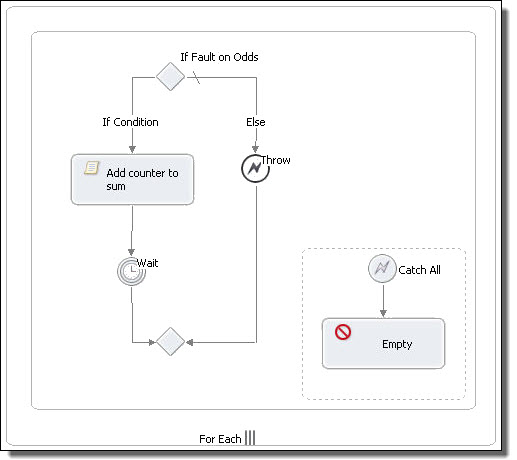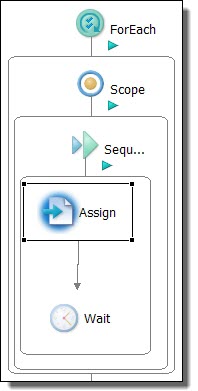Informatica ActiveVOS
- Informatica ActiveVOS 9.2.5
- All Products

Required Properties
| Optional Properties
|
|---|---|
Counter Name
| Name. See
Selecting Activity Labels
|
Start Counter Value
| Completion Condition Expression
|
Final Counter Value
| Count Successful Branches Only
|
Parallel Execution Flag
| Join Condition. See
Creating a Join Condition for an Incoming Link
|
Suppress Join Failure. See
Process Properties
| |
Comment. See
Adding Comments to a Process
| |
Documentation. See
Adding Documentation to a Process
| |
See
Setting Visual Properties and Using Your Own Library of Images
| |
Execution State. See
Viewing the Execution State of an Activity or Link
| |
Extension Attributes and Extension Elements. See
Declaring Extension Elements and Attributes .
|
<forEach counterName="NCName" parallel="yes|no"> standard-attributes> standard-elements <startCounterValue expressionLanguage="anyURI"> </startCounterValue> <finalCounterValue expressionLanguage="anyURI"> </finalCounterValue> <completionCondition extension-attribute extension-element <branches expressionLanguage="URI"? countSuccessfulBranchesOnly="yes|no"?> an-integer-expression </branches> </completionCondition> activity </forEach>
<forEach counterName="counter" parallel="no"> <startCounterValue>1</startCounterValue> <finalCounterValue>100</finalCounterValue> <completionCondition> <branches countSuccessfulBranchesOnly="yes"> 10</branches> </completionCondition> <scope>...</scope> </forEach>


| 
|